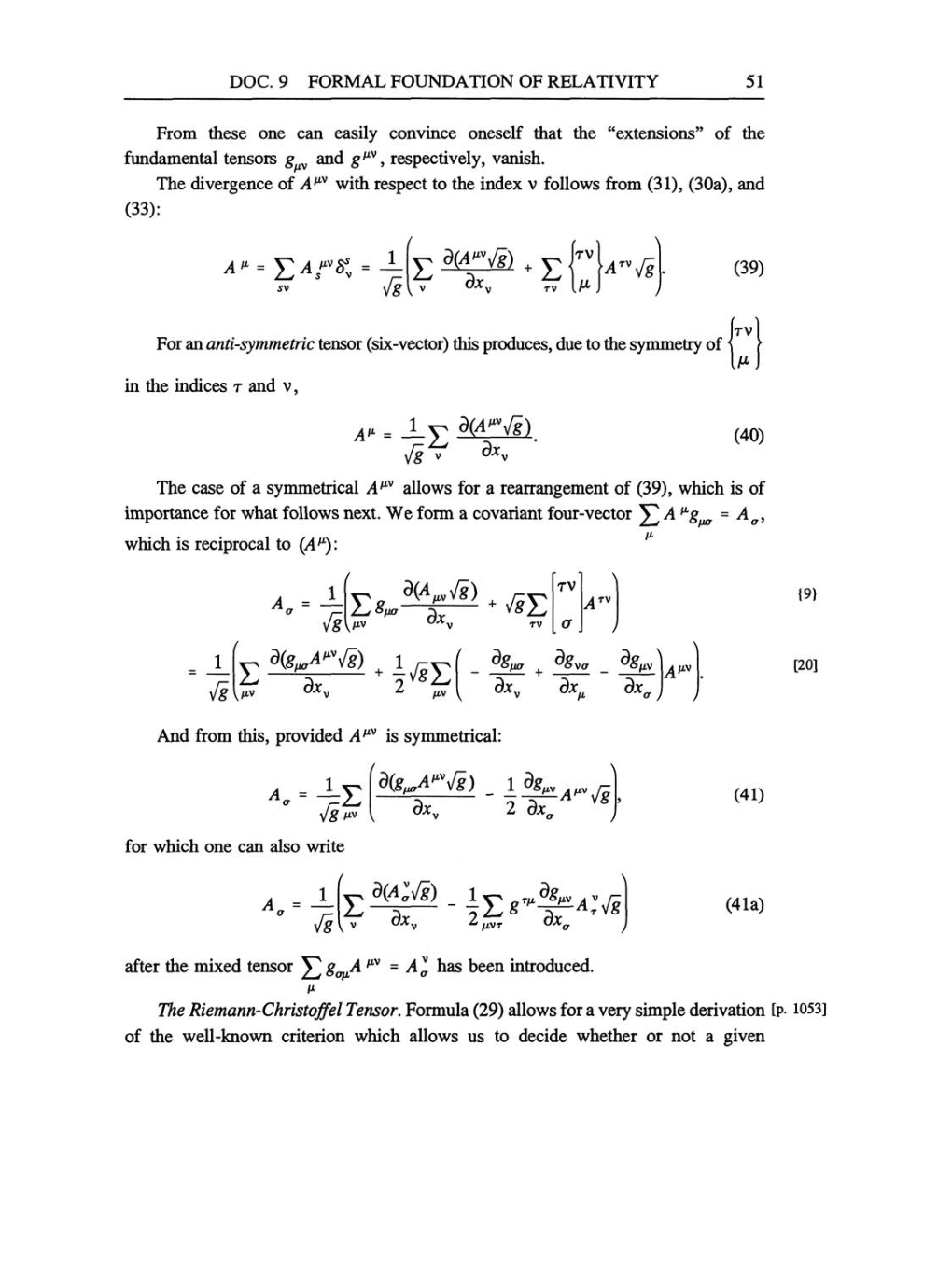DOC.
9
FORMAL FOUNDATION OF RELATIVITY
51
From these
one can easily
convince oneself that the
"extensions"
of the
fundamental
tensors
g^v
and
gßV,
respectively,
vanish.
The
divergence
of
AßV
with
respect
to
the index
v
follows from
(31), (30a),
and
(33):
y
+
y
tv
A™fg
dx
TV
(39)
For
an
anti-symmetric
tensor
(six-vector)
this
produces,
due
to the
symmetry
of
tv
in the indices
t
and
v,
A*
=
-V
dC^Vg)
sfg v
dxv
(40)
The
case
of
a symmetrical
Auv
allows for
a rearrangement
of
(39),
which is of
importance
for what follows
next.
We form
a
covariant four-vector
^
A ßg^
=
Aa,
which
is
reciprocal
to
(A*1):
v-
A_
=
1
fs
Es"%^
-
«5E
y/xv
UAv
TV
-
•
tv
Arv
O
»
1
vß
E
/XV
dx..
4^E
I-
^
/XV
Ög""
dgliV
A^
{9}
[20]
And from
this, provided
AßV
is
symmetrical:
=
4tE
fs
/XV
djg^A^
sfg)
dx..
1
dgMV
2
5;c_
for which
one can
also write
(41)
A_
=
öKv£)
dg,
E:1!^
-
-^Eg^^Vi
2
/XVT
after the mixed tensor
^
g^A
=
A
"
has been introduced.
ß
(41a)
The
Riemann-Christoffel
Tensor. Formula
(29)
allows for
a very simple
derivation
[p.
1053]
of the well-known criterion which allows
us
to decide whether
or
not
a given
